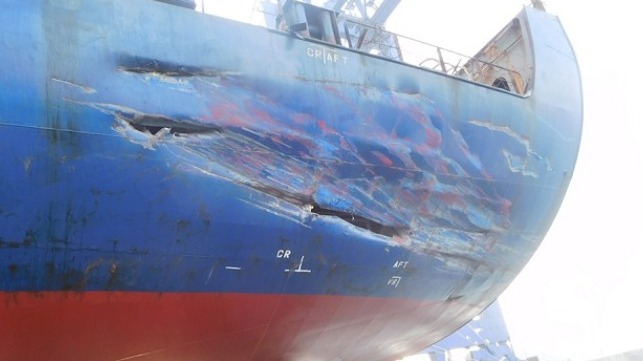Collision: Call for Review of Navigation Status Fields in AIS

The U.K. Marine Accident Investigation Branch (MAIB) has released its report into the collision between container vessel ANL Wyong and gas carrier King Arthur, citing risks associated with AIS data.
On August 4, 2018, the U.K. registered container vessel, ANL Wyong, and the Italian registered gas carrier, King Arthur, collided in darkness, dense fog and an area of heavy shipping traffic, south-east of Gibraltar. Both vessels were destined for Algeciras, Spain. ANL Wyong was stopped and waiting for a pilot as there was no berth immediately available; King Arthur was heading towards a boat transfer position near Algeciras.
The accident happened because neither vessel appreciated the risk of collision in sufficient time to take effective action and pass at a safe distance, says MAIB. The investigation highlighted risks associated with the inappropriate use of VHF radio and AIS information when assessing risk of collision. The collision occurred within a recognized vessel traffic service (VTS) area. However, the vessels were not warned of the developing risk by the shore authority responsible for traffic safety in the area.
Although both vessels were monitoring the shipping situation, neither bridge team responded effectively to the developing, hazardous situation, says MAIB. On board ANL Wyong, the officer of the watch was aware of numerous other vessels approaching, but perceived that they would all keep clear, so took no action. On board King Arthur, the master’s action to avoid ANL Wyong was insufficient, and collision-avoidance decisions were largely based on AIS information and VHF conversations, which were misleading and distracting.
King Arthur’s master was conning, and altered course to starboard intending to pass astern of ANL Wyong. Although King Arthur’s master could not see ANL Wyong, his assessment of the situation was primarily based on automatic identification system data. However, ANL Wyong was stopped in the water and not making way as King Arthur’s master had perceived.
As a result, the decision to turn King Arthur to starboard actually had the effect of putting the vessels on a collision course. When King Arthur’s master realized that a dangerous situation was developing, full starboard rudder was applied. However, this action came too late to prevent the collision. ANL Wyong’s officer of the watch was monitoring the situation but took no action when it became apparent that a multiple close quarters situation was unfolding.
A safety recommendation (2020/115) has been made to the Spanish Ministry of Development to review the navigational safety arrangements for shipping traffic in the approaches to Algeciras.
A safety recommendation (2020/116) has also been made to the Maritime and Coastguard Agency to propose an amendment to the IMO to review the navigation status fields in AIS to incorporate a status for vessels underway, but not making way.
The report is available here.
